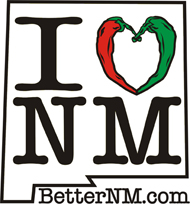 Mikaela reports:
Mikaela reports:
The focus of this planning conference is agricultural preservation. I thought I'd share a few snippets and initial thoughts:
What are the trends affecting agriculture in the U.S.?
- 15% of the farms in the U.S. produce 90% of agricultural output.
- These 15% are farms with sales over $100,000.
- 78% of all farms in the U.S. have sales less than $10,000.
- Of these farms, the average farm income is -$4,000.
- Big farms and small farms are both growing in number.
- More people are farming because they like the lifestyle and working second or third jobs to support their farming habits!
- America has the "full-stomach dilemma." Agriculture industry can't depend on increased demand here at home (our problems all center on OVER-nutrition in that we're fat fat fat and eat processed food), so any growth must come from export.
- Agriculture CAN grow by valuing non-food amenities that agriculture provides, including open space, lifestyle choices, cultural heritage, wildlife habitat, and air filtration (carbon sequestration).
- Agriculture can also transition to value-added crops, such as organics, gourmet items, local specialties, etc.
- Local agriculture may also get a boost from rising oil/gas prices, since local farmers don't have to pay for higher transportation costs.
Picture it: white people w/ money enough for hobby farming and retirees are buying:
- Land in rural -- but not TOO rural -- areas. (It's gotta still be a reasonable drive to cultural centers and shopping centers)
- Land close -- but not TOO close -- to neighbors (land w/ neighbors sells for higher prices than land all alone in remote areas)
- Land close to public land (leveraged open space that will stay open space)
- Land close to pretty bodies of water (lakes, streams, etc.)
- The higher, the better, areas (higher elevations add value to land)
- The greener, the better, areas
- The more scenic, the better, areas (hilly, rough landscapes sell for more)

Why are they doing it when it doesn't make money?
The answer, backed up by multiple NMSU researchers, is "just because." The lifestyle itself is the amenity, and it accounts for 75% of the value of agricultural land.
"Ranching has never provided a great living, but it sure is a great life."





|